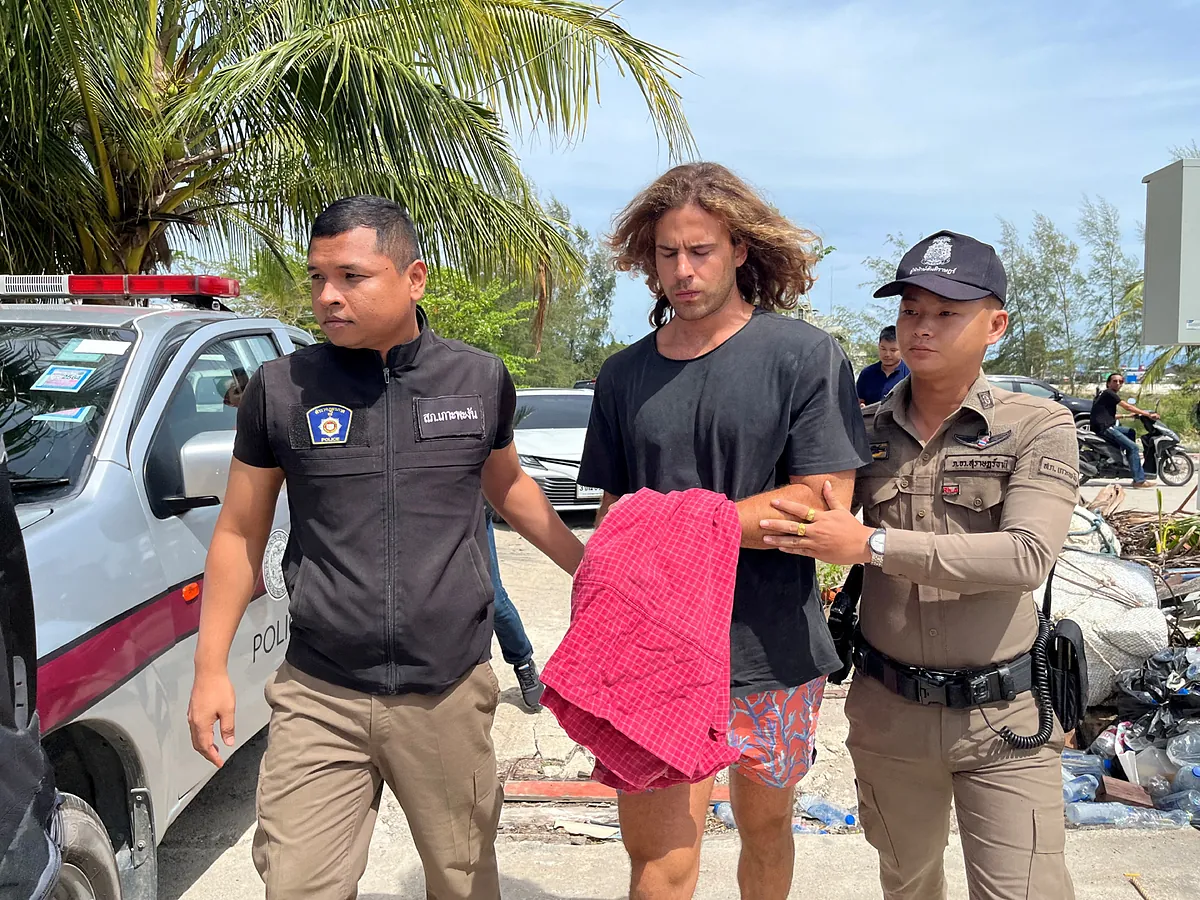The beautiful island that’s been completely destroyed by surfers | World | News
Fifty years ago, two Australian surfers stumbled across the “perfect” wave on the remote Indonesian island of Nias, located just off the western coast of Sumatra.
For centuries, it was described as a “paradise garden” – a jungle of deer, birds and monkeys and remote communities.
Unbeknownst to them, however, their discovery would set off a chain reaction that would bring devastating consequences to the island’s community, home to around 895,500 people as of last year.
Now, a new documentary by Rebecca Coley – Point of Change – is shining a light on the impact of overtourism on traditional communities.
When asked by Express.co.uk whether the original surfers regret opening Nias up to the world, Coley said: “One of the photographers in the film, Erik Aeder, sums it up well when he says that if he got the chance to do it again, he wouldn’t.
“Of course hindsight is a fine thing and they weren’t to know that surfing would become so popular and so many people would turn up.”
In the 1970s, pair of surfers – John Geisel and Kevin Lovett – wished to escape from the testosterone-fueled surfing boom in Australia and spotted Nias on the map, speculating that it might have fantastic “surf potential”, as Lovett described it. It turned out to be one of the best surf spots in Oceania, if not the world.
They arrived at the same time as just two other tourists and the four revelled in the island’s perfect waves, empty beaches and hospitable locals.
However, it was not long before word got out to the surfing community about the island’s idyllic charms as people shared their amazing experience with friends.
Soon, the secret was out and The Point was in surf magazines and films. In 1978, Erik Aeder, a surf photographer, took photos of the wave and it was published in Surfer Magazine the next year.
“When the first photos were published, the surfers who were involved didn’t think the location would be named, but it was, and then more and more people turned up and so that caused a sudden boom in tourism at the time,” Coley explained.
In 1980, Tracks magazine published an article entitled “Off the Beaten Track”, which included pictures and instructions on how to get there. This was met with anger by many.
“There was no stopping it at that point,” Aeder said in the documentary. “It was very hard knowing that you’re probably helping a place go downhill.”
The pinnacle was the moment in the 1990s that Coca Cola decided to shoot a commercial there. After this, more guesthouses were built, the beach turned into a building site and it became a party town.
Lovett returned to Nias around this time, but he found a completely different island to the one he first visited in the 1970s. He added: “From that perfect tree line point with a bunch of single fins under a tree… it’s done. It’s gone. It’s a paradise lost”.
In its place were lines of beach houses, chopped down trees and AIDS posters.
The advent of social media has only intensified concerns about the downfall of Nias. Coley added: “Nowadays it would be heightened even more as there is the issue of people sharing secret spots or geotagging places that are amazing spots of natural beauty and then loads of people turn up and it gets destroyed.”
“It’s not like here now,” said one local in the documentary. “It’s like the West now. You look out for yourself. You worry about your own future”.
Today, Nia’s shorelines are scattered with tonnes of plastic waste.
The history of Nias has also been plagued by the case of a missing girl. In 1976, a number of the group of travellers became seriously ill with malaria, including a young lady called Ingrid.
“Ingrid went to a nearby hospital with some local guys who had been hanging around the point, whilst the other members of the group left Nias and headed to the mainland to seek medical treatment,” Coley said.
“It was twenty years later when Kevin returned to Nias… he found out from the locals that the hospital Ingrid had gone to was apparently closed and… no one seemed to know what had happened to her.
“To this day we haven’t been able to find out what happened to her.”
When asked whether the locals welcome the tourists or wish for a return to their hidden paradise island, Coley said: “I can’t speak for all the Niasian people of course, but from the interviews I conducted, the generation of elders mostly told me they missed the old ways of being and thinking about the village as a whole….They felt this had been lost due to the competitive nature of tourism on the Point.”
On the other hand, “most of the younger people I interviewed welcomed tourists, they just ask them to be respectful… Be respectful of the fact that you are a visitor and tread lightly.”
Coley argued that what happened on Nias should be a warning to the rest of the world about the consequences of overtourism.
She said: “I think Nias is a microcosm and we can apply those lessons to anywhere really – we don’t want to ruin whatever is precious and unique about the place we are visiting, so we have to be respectful and listen to the locals perspective on this.
“This is a story that has significance globally as the impact is felt in many destinations where tourism has grown out of proportion to what the place can handle and what makes the locals’ lives still enjoyable.
“We want to interact with nature in a way that respects it and maybe in the future we might see a move towards a more slow or regenerative type of travel – could we move to give back more than we take?”
POINT OF CHANGE is now in cinemas https://pointofchangefilm.com/.




